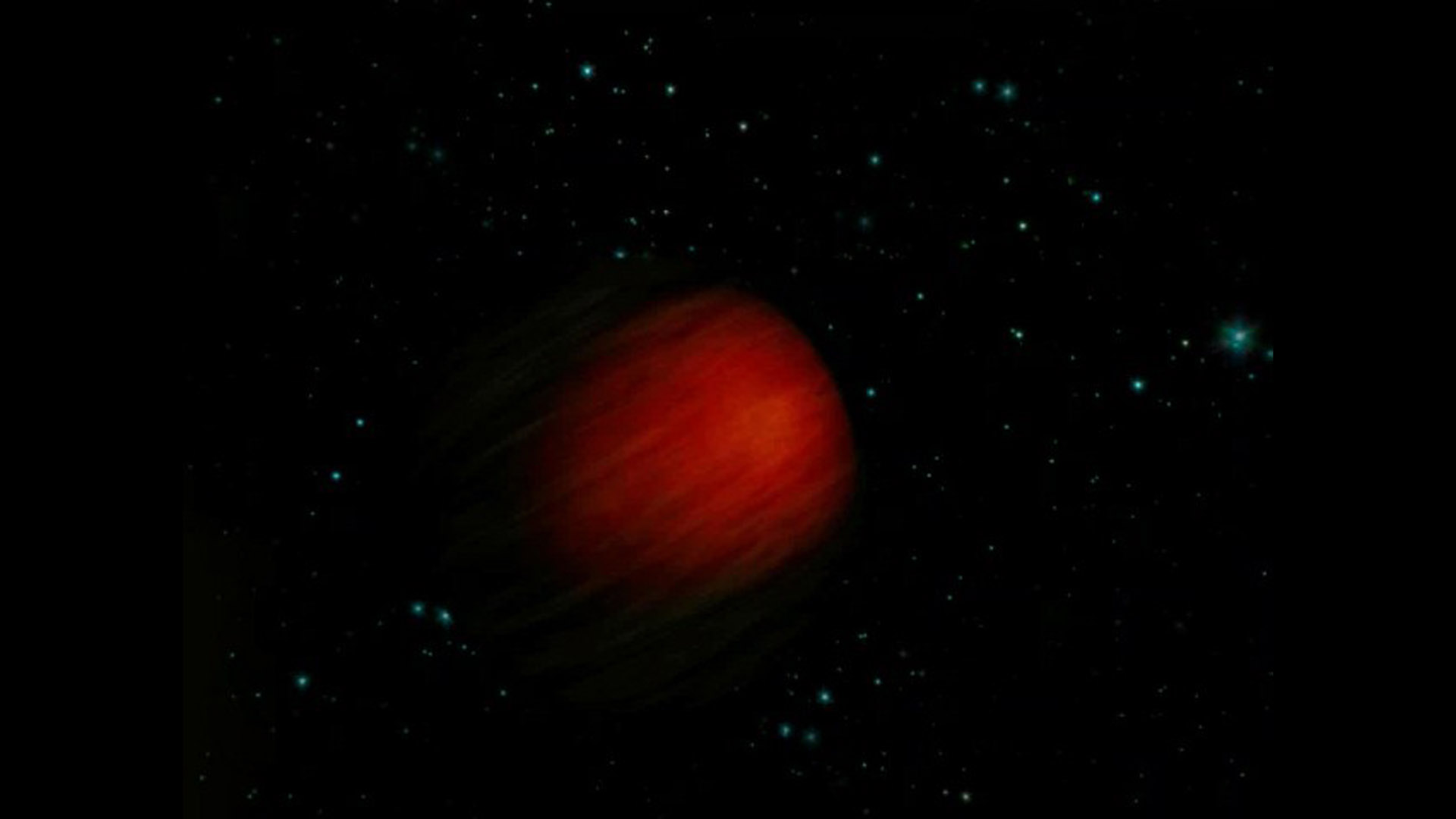James Webb Space Telescope finds a 'hot Jupiter' exoplanet that defies expectations
The exoplanet Smertrios has a surprising abundance of heavy elements in its atmosphere.

The atmospheres of gas giant planets across the Milky Way galaxy can be very different from those in our solar system, the James Webb Space Telescope has found.
Observations of the distant exoplanet HD149026b, also known as Smertrios, revealed that the planet's atmosphere is rich in what scientists call heavy elements, essentially anything other than hydrogen and helium. In Smertrios' atmosphere, the James Webb Space Telescope detected high concentrations of carbon and oxygen.
The results have taken astronomers by surprise. In gas giant planets of our solar system, such as Jupiter, Saturn, Uranus and Neptune, scientists see a clear correlation between the planet's mass and the amount of heavy elements in the atmosphere. The more massive the planet, the lower the concentrations of these elements in its atmosphere.
Related: James Webb Space Telescope finds no atmosphere on Earth-like TRAPPIST-1 exoplanet
"The giant planets of our solar system exhibit a nearly perfect correlation between both overall composition and atmospheric composition and mass," Jacob Bean, a professor of astronomy and astrophysics at the University of Chicago and lead author of a new paper describing the observations, said in a statement.
Astronomers have seen more diverse atmospheric compositions in gas giant exoplanets previously, but the composition of the atmosphere of HD149026b is off the charts.
"[The planet is] the mass of Saturn, but its atmosphere seems to have as much as 27 times the amount of heavy elements relative to its hydrogen and helium that we find in Saturn," study co-author Jonathan Lunine, a professor in the Physical Sciences Department at Cornell University, said in the statement.
Breaking space news, the latest updates on rocket launches, skywatching events and more!
HD149026b, or Smertrios, is a so-called hot Jupiter, a Jupiter-like planet that orbits extremely close to its parent star. In the case of Smertrios, this distance is so short that the planet's year lasts only three Earth days. As a result of this close proximity to the star, temperatures in Smertrios' atmosphere reach a scorching 2,700 degrees Fahrenheit (1,425 degrees Celsius), which is three times higher than the surface temperature of the solar system's hottest planet, Venus. That, however, does not explain the planet's unusual atmospheric composition
"It appears that every giant planet is different, and we're starting to see those differences thanks to JWST," Lunine said. "In this paper, we have determined how many molecules there are relative to the primary component of the gas, which is hydrogen, the most common element in the universe. That tells us quite a lot about how this planet formed."
By measuring the atmospheric composition of a planet, scientists can get an insight into the chemistry of its parent star and the material from which it formed millions or billions of years ago. The planetary disk that gave rise to Smertrios must have had much more carbon compared to oxygen than the disk that birthed our solar system, the study found. The researchers plan to study more hot Jupiter planets in the coming year, with the hope of finding "statistical trends" behind the diversity of their chemical compositions.
"The origin of this diversity is a fundamental mystery in our understanding of planet formation," Bean said. "Our hope is that further atmospheric observations of extrasolar planets with JWST will quantify this diversity better and yield constraints on more complex trends that might exist. We have shown definitively that the atmospheric compositions of giant extrasolar planets do not follow the same trend that is so clear in the solar system planets," he added.
The study was published in the journal Nature on Monday, March 27.
Follow Tereza Pultarova on Twitter @TerezaPultarova. Follow us on Twitter @Spacedotcom and on Facebook.

Tereza is a London-based science and technology journalist, aspiring fiction writer and amateur gymnast. She worked as a reporter at the Engineering and Technology magazine, freelanced for a range of publications including Live Science, Space.com, Professional Engineering, Via Satellite and Space News and served as a maternity cover science editor at the European Space Agency.
